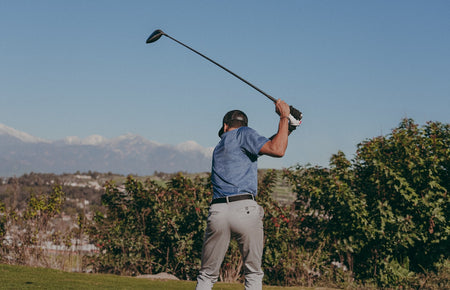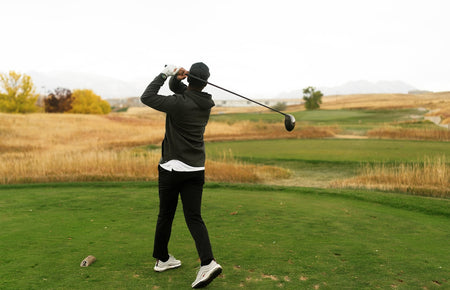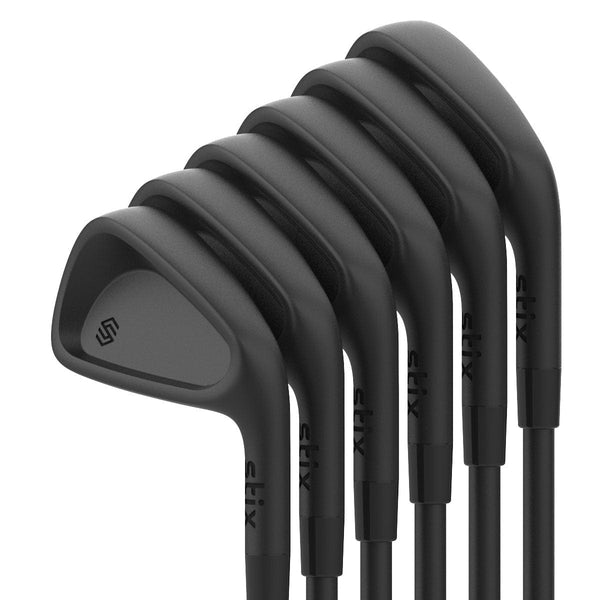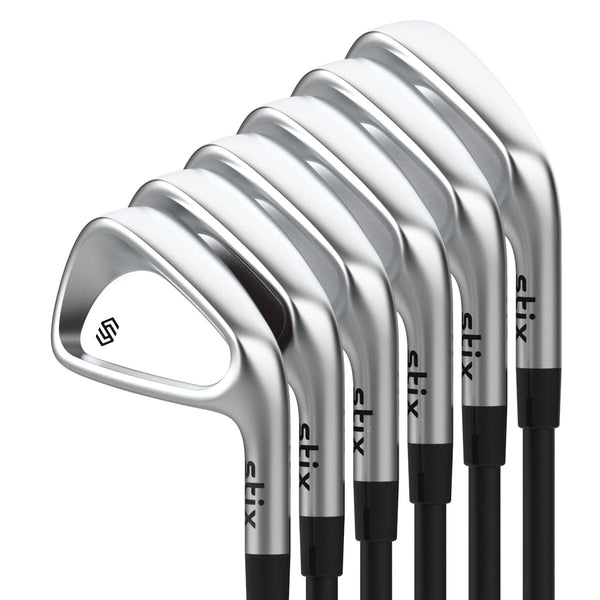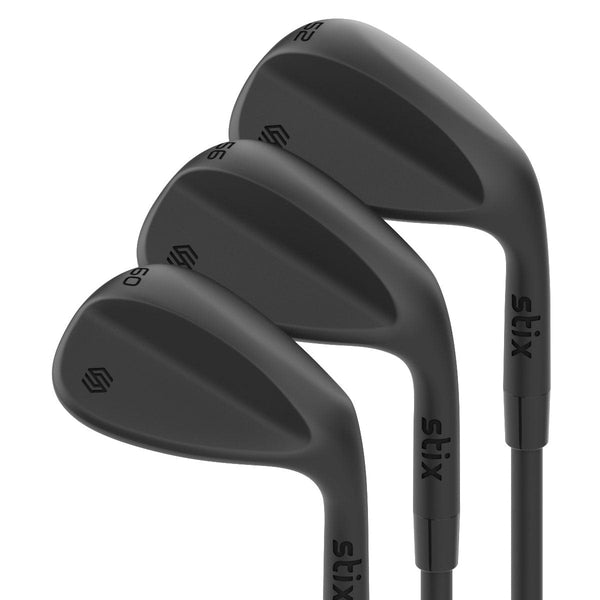The secret to low scores and satisfying golf lies not in flashy drives, but in mastering the fundamental skills. Dialing in your golf alignment and aiming is like finding a hidden shortcut to better scores. It's about turning those wayward shots into straight, accurate strikes that get you closer to your goal: a lower handicap and a more enjoyable game. Ready to hit fewer hooks and slices, and see more fairways and greens? Let's get started.
Understanding the Basics
The Anatomy of a Golf Swing
Beneath the surface of every great golf swing, there are key components that make it work. Two of these are alignment and aiming.
- Alignment refers to your body's positioning relative to your target. It sets the direction for your swing path. Get it right, and your ball will follow suit.
- Aiming, on the other hand, involves setting your clubface to your intended target. Combining precise alignment with accurate aiming sets the stage for a successful shot.
Ball Flight Basics
To understand how alignment and aiming influence your game, let's dig into the factors that dictate your ball's flight.
- Clubface at Impact: The position of your clubface at the moment of impact primarily dictates the ball's initial direction. A square clubface sends the ball straight, an open one sends it to the right, and a closed one to the left (for a right-handed golfer). Learn more about how to hit a draw and fade shot.
- Swing Path: This is the direction your club travels during your swing. If your swing path and clubface alignment are synchronized (both aiming in the same direction), the ball will fly straight. If they're not, you'll impart side spin on the ball, resulting in a hook or a slice.
- Spin Axis: The ball's flight is also influenced by its spin axis. Depending on your swing path and clubface alignment at impact, the ball can tilt on its axis, resulting in curving flight paths.
Understanding these basic principles gives you the tools to diagnose and rectify issues in your alignment and aiming.
Avoiding Slices and Hooks
Slices and hooks are common ailments for many golfers. They occur when the clubface is not square to the swing path at impact – the classic result of poor alignment and aiming. A slice starts to the left of the target and curves dramatically to the right (for a right-handed golfer), while a hook does the opposite. Improving your alignment and aiming can help you hit straighter and more predictable shots, getting rid of these frustrating curveballs.
Learn more: What is a Slice? And How to Improve Ball Flight
How to Improve Alignment and Aim
Start by Getting Into the Correct Position
Body Alignment
In golf, it's your body that does the work. Your feet, hips, and shoulders play a pivotal role in setting up your swing path. If you align these elements parallel to your target line (the imaginary line from your ball to your target), your swing path will naturally follow this line, helping to deliver straight shots.
This also means that the stance width matters. A narrower stance can lead to an unstable swing, while a wider stance can restrict the hip turn. An ideal stance width is generally the width of your shoulders for irons and a little wider for driver shots.
Hand Position
Your hands steer your golf club, controlling the clubface and, in turn, the direction and flight of the ball. The correct grip can contribute to better club control, helping you maintain a square clubface through impact. A 'neutral' grip, where you can see two knuckles of your left hand (for right-handed golfers), is a good starting point. A 'strong' grip (three knuckles showing) can promote a draw, while a 'weak' grip (one knuckle showing) can lead to a slice.
Neck and Eye Alignment
Your neck and eye alignment are your compass on the golf course. Looking down at the ball, you should be able to see the target line. With a proper stance, your head should be over the ball, enabling you to visualize the target line and aim accurately. Keep your neck relaxed and eyes fixated on the ball to maintain a steady head position through your swing.
Understand the Crucial Role of the Club Face
Your clubface plays a critical role in shot outcome. It's the last piece of the puzzle that contacts the ball and sends it flying toward your target. At setup, the leading edge of the clubface should be perpendicular to your target line. This is known as a 'square' clubface.
During your swing, your goal is to return the clubface to this square position at impact. An open clubface (pointing right of the target for right-handers) at impact can cause the ball to start right of the target and potentially slice, while a closed clubface (pointing left) might result in a pull or a hook.
To ensure a square clubface at impact, focus on a consistent grip and an aligned setup. Regular practice with alignment aids or mirror work can also help engrain the correct clubface alignment.
Practice Aiming and Focusing on Targets
Now that you've aligned your body and clubface, it's time to aim. Proper aiming involves visualizing the shot and focusing on the target during your pre-shot routine. It can be helpful to pick an intermediary target – a spot a few feet in front of your ball along your target line. This makes it easier to aim your clubface accurately and keeps your focus sharp.
Remember, your body and feet should be parallel to this target line, not aiming directly at it. Imagine standing on a railway track: the ball is on one rail (the target line), and you're standing on the other, both heading in the same direction.
Play with the Right Equipment
Using clubs that fit
Your equipment can either assist or impede your alignment and aiming. If your club is too long or too short, it can force you into an unnatural stance, affecting your alignment. Similarly, a club with the wrong lie angle can lead to inaccurate shots, even with good alignment and aiming.
Golf Club Length
- Height Considerations: Typically, taller players require longer clubs, while shorter players need shorter ones. This is because your height affects your distance from the ground and, consequently, the club length you need to comfortably hit the ball.
- Wrist-to-Floor Measurement: This is a common method for approximating the right club length. It involves measuring the distance from your wrist to the floor while standing upright.
Learn more: Golf Club Length: Which Size is Right for You? | Stiff vs. Regular Flex: Which Shaft is Right for You?
Choose the right ball for your swing
The type of golf ball you use can also influence your game. Some balls are designed to minimize the effects of off-center hits, which can be helpful for beginners struggling with alignment and aiming.
Type of Golf Balls
- Hard vs. Soft Balls: Softer balls typically provide more spin and feel, which can enhance control for more advanced players. Harder balls, on the other hand, may offer more distance and durability, which can be beneficial for beginners or high-handicappers.
- Low Spin vs. High Spin: Low spin balls can help reduce hooks and slices, making them a good choice for players struggling with these issues. High spin balls can provide more control and stopping power on the greens, which can benefit more skilled players.
Learn more: Soft vs. Hard Golf Balls: Which Should You Use?
Don’t Overlook the Importance of Mental Preparation
Golf is often likened to a mental chess game. Like chess, golf requires strategy, foresight, and mental resilience. Mental preparation can play a significant role in enhancing your alignment and aiming.
Visualizing your shot before you execute it can be incredibly powerful. Picture the flight of the ball, the path it will take, and its landing spot. This mental image guides your body's alignment and aiming and helps improve shot accuracy and consistency.
Developing a consistent pre-shot routine can also set the stage for successful alignment and aiming. This routine could involve visualizing your shot, setting up your stance and clubface, focusing on your target, taking a couple of practice swings, and then executing your shot.
Common Mistakes and How to Avoid Them
Golf, like any other sport, has its fair share of common pitfalls. Here are some typical alignment and aiming mistakes and how you can avoid them:
- Misaligned Shoulders: Even with correctly aligned feet and hips, your shot can still go astray if your shoulders aren't parallel to the target line. Pay attention to your shoulder alignment during your setup.
- Ball Position: Ball placement in your stance can dramatically influence shot direction and trajectory. If it's too far forward or back, it can lead to hooks or slices. Experiment with your ball position to find your optimal placement for straight shots.
- Poor Clubface Alignment: Incorrect clubface alignment at setup can send your ball off in unintended directions. Practice setting up with the clubface square to your target line.
Making Adjustments
As you progress in your golf journey, your alignment and aiming should also evolve. Perhaps you start to notice your shots consistently veer to the right, or your drives always end up in a slice. These issues can be indicators that adjustments are needed.
Pay attention to patterns in your game. If a problem persists, it might be time to modify your stance, your grip, or your aiming strategy. Remember, golf is a game of continual learning and adaptation.
Practice Techniques
Just as a musician doesn’t become concert-ready overnight, your alignment and aiming skills will need regular practice. Here are some techniques to help you sharpen your skills:
- Alignment Drills: Use alignment sticks or clubs on the ground to practice setting up parallel to your target line. One stick should point towards your target, representing your target line, and the other should be parallel to it, marking your body line. Regularly practicing this drill can engrain proper alignment in your muscle memory.
- Mirror Work: Using a mirror can provide instant visual feedback on your setup. Practice your stance and clubface alignment in front of a mirror to reinforce proper positions.
- Bucket Drill: For aiming practice, try the bucket drill. Place a bucket or similar target about 10-15 yards away. Aim at it with various clubs, trying to get your ball as close as possible. This drill can help you fine-tune your aiming accuracy.
Learn more: Golf Shots: The Good, Bad, and Ugly
Where and When to Practice
Consistent practice is key for improving your alignment and aiming. You can practice these skills both on the course and off.
During your practice rounds, pay special attention to your setup and pre-shot routine. Make the most of the driving range by focusing on aligning to different targets with varied clubs.
Off the course, you can practice at home using mirrors, or even try virtual golf simulators. They offer great feedback and allow you to practice regardless of the weather or time constraints.
Learn more: Golf Lessons: Are They Worth It for Beginners?
Benefits of Better Alignment and Aiming
Improving your alignment and aiming doesn't just lower your scores, it also enhances your enjoyment of the game. It offers a greater sense of control over your shots, boosts your confidence, and reduces the frustration of unpredictable ball flights.
Getting your alignment and aiming dialed in can transform your golf game from a frustrating puzzle to a rewarding challenge. So grab your clubs and let's get practicing!
Practice Makes Perfect
Remember, golf isn't a sport of perfection but a game of progress. Even the most seasoned professionals continually fine-tune their alignment and aiming. As a beginner or high handicapper, focus on progress, not perfection. Every small improvement is a step in the right direction.
Consistent practice, patient learning, and a positive attitude will steadily steer you towards lower scores, straighter shots, and a more enjoyable golfing experience. Keep practicing, stay patient, and most importantly, enjoy the journey. Happy golfing!
Look better. Play better. Shop Stix Golf Clubs →
You might also like:


